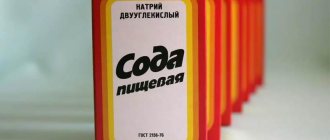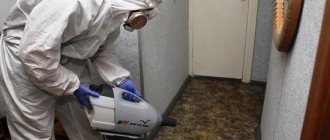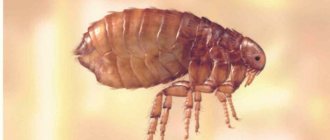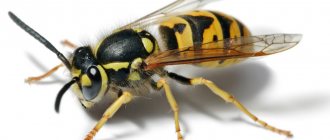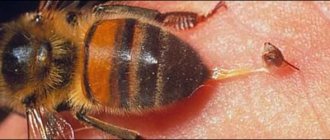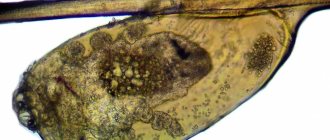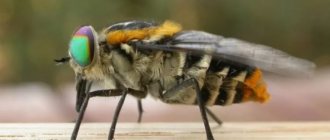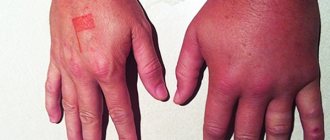How long do bedbugs live after disinfestation?
You need to understand the concepts. Pest control involves performing actions aimed at destroying insects. If the target is fungi, bacteria, viruses, the cleaning procedure of the room is called disinfection. There is another similar definition - deratization.
At the same time, small rodents are destroyed.
Sometimes the death of pests occurs a few minutes after baiting. This result is achieved if the insecticide, when sprayed from a special equipment cannon, hits the parasite directly. As a result, the poison enters the body in several ways: through the respiratory tract, the outer integument. This speeds up the destruction of bed parasites during disinfestation.
Sometimes pests remain viable for a long time. This is due to their resistance to negative external factors. Life expectancy can vary, which is influenced by the amount of poison that enters the body, the type of insecticide, and the stage of development of the parasite. Some bedbugs continue to live even after careful treatment.
Parasites can live even after treatment
What happens after disinsection
If the pests still remain and lead their usual lifestyle after disinfestation, several reasons for this phenomenon are given:
- errors when processing the apartment: not all areas were processed;
- the working solution was too weak, the concentration of the insecticide in it was lower than recommended;
- parasites have developed resistance to the chemical;
- re-treatment was not carried out, and the long-acting insecticide managed to lose its properties over the next 14 days after spraying, as a result a new generation of larvae appears.
If the treatment is carried out correctly, the hatched bedbugs will soon die too.
This is facilitated by the long-term action of the insecticide - when larvae and nymphs come into contact with it, they receive a dose of poison, despite the fact that time has already passed since the first spraying procedure.
Bug nymph
Can bedbugs appear again after treatment?
There is such a possibility. There are many reasons. For example, if parasites do not come out of their hiding places when the home is treated with hot or cold fog, they receive a small dose of poison. In addition, the high probability of bedbugs appearing a second time is due to the maturation of pest eggs.
Insecticides do not penetrate through the shell, which means that a new generation of insects will soon appear.
Bedbug eggs
How to get rid of the smell after disinfestation of bedbugs
The cause must be eliminated. It consists in the high penetrating ability of a fine suspension sprayed by a specialist during disinfestation. Substances take a long time to erode. To speed up this process, follow the recommendations:
- upon returning home, immediately after the end of the period during which the room was “mothballed”, you should ventilate the room;
- You can remove the smell by wet cleaning the carpets (if you have them at home);
- in the future, until the period of action of the insecticide ends, it is necessary to frequently arrange through ventilation.
Wet cleaning of the floor and washing of furniture covers can be done after 14-21 days (depending on the type of insecticide).
To remove the smell, it is recommended to clean the surfaces from traces of insect activity.
Thorough cleaning will get rid of the smell
On what day after disinfestation do bedbugs disappear?
A competently carried out disinfestation procedure will guarantee the disappearance of bloodsuckers from the apartment. It is important to first analyze the situation: the characteristics of the living space, possible areas of localization of bloodsuckers. The results obtained are reported to the SES master.
When looking for bedbug nests, it is worth considering the fact that bloodsuckers hide in hard-to-reach places: baseboard cracks, the bottom of sofas, bed frames, under wallpaper and paintings, on the back walls of cabinets. Thorough sanitation of bedding, mattresses and furniture upholstery greatly increases the effectiveness of sanitation.
Disinsection of living space is an effective method of getting rid of bloodsuckers, but not a single professional will give an exact time frame for the complete death of bedbugs. This depends on a number of factors.
Most adult insects die on the first day after contact with pesticides, the rest gradually, over the course of a month. But if they are resistant to the chosen insecticide, bedbugs can withstand persecution and reproduce in larger numbers. It is recommended that you do not start the process, but try again.
Larvae, upon contact with chemicals, die within 24 hours. Sometimes this period is extended if the nest is securely hidden and has not been affected by the insecticide. Then you need to wait a few days until they crawl out and come into contact with the poison.
How long does it take for bedbugs to die after treatment?
This period of time can last from 5 to 14 days. Some parasites die, others live on, but not for too long. This is influenced by various factors. To understand how long bedbugs live after disinfection, you need to consider the treatment method:
- Spraying substances yourself increases the risk of pests appearing again;
- Professional disinfestation significantly reduces the likelihood of re-infection of an apartment/house.
This means that the quality of treatment by SES or employees of private companies for disinfestation of objects is much higher.
Accordingly, the lifespan of parasites is much shorter. The dose of poison received by bedbugs when a person independently sprays the substance is less, so the pests disappear after 10-14 days (they crawl around the apartment for a long time). In this case, the life expectancy of bedbugs often does not even decrease; thanks to their immunity, the insects continue to parasitize without harming themselves.
Professional pest control is more effective
Why did there become more bedbugs after disinfestation?
This is just an appearance. Insects are leaving their nests, so their numbers seem to have increased. In fact, the number of pests physically cannot increase over one night or several hours. This means that insects begin to look for safe habitats.
You need to understand how long after treatment the bedbugs die. This will allow you to assess the situation in the apartment. By knowing the average lifespan of insects, you can determine when they will begin to disappear. Then the number of insects will sharply decrease.
Parasites leave nests after spraying poison
Why didn't the drugs work?
It is impossible to say with certainty whether bedbugs will die after disinfection. Survival depends on many factors. If all even the most secluded corners have been well treated, the chance of quickly getting rid of parasites increases.
Adults disappear, but their newly emerged larvae will be alive. Parasites rarely disappear immediately; it will take time. Newly appearing individuals will die after some time, since the effect of modern insecticides is long-lasting. Do not rush and do general cleaning immediately after treatment.
The reason why the bedbugs did not die may be an incorrect approach to the procedure. Re-infestation of the apartment will occur if all corners have not been thoroughly treated and places where insects accumulate have not been identified.
An incorrectly selected insecticide may not work. It is better to choose modern drugs, since insects have developed a strong immunity to old-generation insecticides.
It is important to identify the cause of the appearance of insects; as a rule, they are brought into the apartment by people; bedbugs themselves cannot travel significant distances. It is necessary to analyze where parasites can be brought into the house from, otherwise, after destruction, the insects will be brought again and the infection will repeat.
It is possible that the bedbugs came from neighbors; in this case, it is advisable to carry out treatment in all neighboring apartments.
To avoid re-infection, it is better to entrust the work to professional services.
How bedbugs behave after treatment
There is often an increase in parasite activity. They leave their nests and begin to look for new places to live where they will be safe. This is facilitated by the release of poison, under its influence the parasites begin to flee.
This is one of the reasons why insects appear among neighbors after treating an apartment.
However, most bed bugs remain in the infested area. After spraying the insecticide, the behavior of the parasites changes. Noted:
- impaired coordination of movements;
- selection of non-standard habitats;
- increased activity even during the day.
Changes in habits are caused, first of all, by an attempt to find a safe place to live in the apartment. However, the main factor influencing the behavior of parasites is still the negative effect of the toxic substance. The insecticide affects the nervous system. At the initial stage, changes in its functions are minor.
Gradually, there is a decrease in mobility, bedbugs have less control over their body, and soon die.
Bed bugs after disinfestation
Why do bedbugs continue to crawl and bite after treatment?
When spraying poison, some of it enters the body of pests. Whether they can move, bite a person, or eat depends on what dose they received. If the amount of insecticide is significant, the parasites will die quickly. Otherwise they are still crawling. It is important to understand how bedbugs behave after treatment if the dose of poison in their body is small:
- crawl out of hiding;
- bite a person.
Pests that have received a minimal dose of poison still do not allow themselves to be detected; they continue their usual existence and can reproduce.
Parasite while feeding
Reasons why bedbugs may remain indoors after treatment
If the bedbugs do not disappear after treatment, but continue to bite at night, then there may be several reasons for this:
- Too little time passed, and the drug did not have time to act on all individuals.
- Poor preparation of the premises for disinfestation. For example, during treatment, some bedbugs remained under the dust and were not exposed to poison.
- Spraying was carried out with violations. Not all shelters have been processed.
- A low-quality product was used, or the solution was made too weak.
- Bedbugs have already been treated with a similar drug, and they have acquired immunity. In this case, the bedbugs do not disappear, but continue their normal lifestyle.
- Repeated disinfestation was not carried out and a new generation of bedbugs appeared.
- General cleaning was done before the recommended time had expired, which allowed some individuals to survive.
- After treatment, the bedbugs disappeared for some time, and then appeared again. Most likely, they returned from their neighbors, who also started destroying them. This happens quite often if preventative work has not been carried out in the apartment.
Preparing the premises
Preparations used to kill bedbugs and the period of death of insects
The speed of pest destruction varies greatly and can take several minutes or several days. Liquid products or aerosols kill parasites faster. After treatment with such preparations, bedbugs will live from several minutes to several hours. Powders act more slowly. The speed of operation of some drugs that destroy bedbugs:
- Hector - death occurs within a few hours;
- Tsifox - parasites die 20 minutes after contact with the insecticide;
- Bed bug beetle - the speed of action of the toxic substance is 2 days;
- Dust Absolute - the death of most of the insect colony occurs within a few days.
Tsifoks from bedbugs
What drugs are used for parasites?
The effectiveness of the procedure usually depends on what product was used. Pesticides are divided into several types:
Insecticides begin to act after 30–40 minutes. Within half an hour, the first batch of pests dies. However, some individuals exhibit resistance to insecticides. After three days, the remaining part of the parasites will die out.
Often, surviving insects change their location, a group of parasites goes to a neighboring apartment or chooses a poorly treated place in the same apartment. To prevent a change in location, treatment should be carried out carefully in all corners of the room. With the right approach to the procedure, uninvited guests will disappear in one go.
How long bedbugs live after treatment depends on many factors; it is impossible to give a definite answer to the question. In order for the insects to leave, you must approach the process of removing them correctly.
Source
Cleaning the apartment after treatment (disinfestation)
When the spraying procedure is completed, you need to leave the room.
Upon return, it is recommended to only ventilate the room; cleaning is not allowed.
Even if it seems that the insects are already disappearing, and the bites do not appear in the morning, you still should not remove the substance from the surfaces. Modern insecticides are characterized by a prolonged action. This means that they retain their properties for some period in open space.
Considering that bedbug eggs die under the influence of an insecticide extremely rarely (for this they must be doused with a chemical), the younger generation will appear in 10-14 days. When cleaning is not carried out, the larvae will receive a dose of poison and will soon die. If you immediately wash the room, the young individuals will grow up and begin making new clutches.
2-3 weeks after treatment, you can clean the most frequently used items and coverings (sofa armrests, shelves, door handles).
General cleaning is carried out later. It is best to completely clean surfaces after 1 month.
Frequently used interior items are cleaned first.
Preparing the apartment
Can bedbugs appear again after treatment? This question is often asked by the owners of infested premises and can only be answered in the affirmative. In order for the disinsection to be of high quality and ensure the destruction of all parasites, it is necessary to prepare the apartment:
- Remove food and anything that could be spoiled by contact with pest control agents out of the house in advance.
- Provide clear access to all sleeping areas where careful treatment is especially important: beds, bedding, corners in the room, baseboards.
- During work, which usually lasts 1-1.5 hours, it is better to monitor the quality of disinfestation.
- Next, it is better for the owners to leave for a few hours while the apartment is under the influence of insecticides.
- After returning, the room must be well ventilated and the bed linen washed at a high temperature of 60-90˚C.
Bedbug death temperature - During disinfestation, adult bedbugs die, so the dead insects need to be collected in a bag, as well as, if possible, their larvae and eggs and thrown away.
- It is better not to carry out wet cleaning for 1-2 weeks, because... Young nymphs emerging from eggs and bedbugs surviving after disinfection, moving along the treated surface, will die.
- The best option would be to leave the apartment for this period (to the country or to stay with friends); upon returning, it is recommended to do a thorough wet cleaning in all rooms, wash or sterilize the dishes, wipe the furniture with hot water and an antiseptic (soda solution), ventilate, vacuum all corners and baseboards, furniture.
When is re-treatment necessary?
If you manage to find new clutches, nests of parasites, and bites continue to appear, you should spray the insecticide again.
The reason is re-infection.
Situation 1: the bedbugs were destroyed, but new nymphs hatched in the room
Young and adult individuals soon die if they touch the poison. However, eggs in hidden places are kept intact. After 2 weeks, larvae will appear and continue to develop: they will turn into nymphs, then into adults and will be able to reproduce.
Larvae, nymphs and adults of bedbugs
Situation 2: bedbugs do not die immediately, but within 2-3 days
This situation is normal. You should worry when the parasites have not disappeared even 2 weeks after treatment. If only a few days have passed since spraying, you need to be patient.
Situation 3: bedbug activity has not decreased within 1-2 weeks
The reason for the low rate of impact on parasites may be due to parasite resistance. In addition, this is often a consequence of errors in spraying the substance.
It is necessary to re-treat the apartment, but with a different preparation and more thoroughly.
Professional pest control
Situation 4: bedbugs appear after a long period of absence
Probable reasons for this:
- parasites have crawled into the facility again;
- The environmental conditions in the room were unsuitable, so larvae did not emerge from the eggs, and the parasites entered the diapause phase, and when the microclimate became comfortable again, the insects became more active and made themselves felt.
How should a room be treated for bedbugs?
Although bedbugs are called bedbugs, they are smart enough to appear in bed only at night, from about 2 o'clock in the morning until dawn, when the sleeping person is guaranteed to be in the deep sleep phase. The rest of the time, bedbugs live and breed in secluded places. Here is a partial list of them:
- between structural elements of beds and sofas;
- behind paintings and in photo frames;
- in chests of drawers, cabinets, on shelves, in drawers of tables;
- in mattresses, mattress covers, pillows, covers, bedside rugs and even curtains;
- in animal cages, in cat and dog bedding and houses;
- in table lamps, lamps, sockets, under wallpaper, under panels, behind baseboards, under parquet and laminate.
There is no point in listing all the secluded places where bedbugs (presumably) live in your house. To discover their clutches and shelters, you have to understand the philosophy of the insect and figure out where it is most convenient to hide, and the shelter should not be far from the feeding trough - a sleeping person.
In advanced cases, bedbugs huddle everywhere, in all cracks, corners and beds. The fact is that at all stages of development, bedbugs and their nymph larvae move quite quickly and are able to cover up to one and a half meters per minute. It costs nothing for insects to crawl the entire room in a quarter of an hour and climb into a warm bed to suck their fill of human blood.
You can view the prices for bedbug disinfestation services in the price list below.
| Disinsection (destruction of cockroaches, bedbugs, fleas and other insects) | |||
| № | Area, m2 | Price of the drug delivery full consultation (RUB) | Cost of the drug for the work of the disinfector (RUB) |
| 1 | 1 room | 800 | 1300 |
| 2 | 2 rooms | 1000 | 1700 |
| 3 | 3 rooms | 1200 | 2100 |
| 4 | 4 rooms | 1400 | 2400 |
| 5 | more than 4 | from 1500 | from 2500 |
Everyone wants immediate removal of parasites after a one-time treatment, but bedbugs continue to bite for some time. For this reason, perplexed apartment residents leave incorrect reviews towards the companies that carried out pest control. Don't rush things, because it's the right thing to do. It is better to independently understand the nature of the origin of the creature and become familiar with its physiology.
Each female individual lays up to 20 eggs at a time, over the entire short life the number of cycles can reach from 15 to 25. The larva develops in the egg for up to 4 days, then a nymph hatches from it, existing safely for 1 month, and grows into a full-fledged adult bug.
While in the eggs, the larva can survive even after high-quality disinfestation. It is necessary to carry out a special barrier treatment of the premises where the parasite was found again within a month in order to kill it at the nymph stage and immediately after degeneration into an adult, while it is still weak. Treatment should be carried out 10-12 days after the initial one.
Types of treatments
There are several types of treatments for bedbugs. Each of them has its own characteristics. Cold fog with poison is not effective in hard-to-reach places, in particular in corners, under baseboards and other points of space, since the steam, being suspended, flies around the room and settles on the surface, and it cannot get under the finishing elements.
It is more effective to use hot fog treatment technology. It gets into almost all hard-to-reach places and kills the parasite at any stage of development. This type of processing is more expensive.
In order to forget forever about how long bedbugs live after disinfection, it is very important to carry it out thoroughly, having previously studied all possible places where they accumulate and reproduce. If this stage is skipped or neglected, then there is a high probability of a rapid revival of insects, and they will bite you with renewed vigor.
Observing parasites can take several days, or even weeks, because they are quite small and do not necessarily require a lot of space to reproduce. The female, by nature, always looks for secluded places for her offspring so that they can continue the race. And given its ability to hatch up to 25 broods during its life, there can be many places of accumulation.
Parasites hide not in linen, as many believe, but in furniture upholstery, where it is usually almost impossible to reach with a vacuum cleaner, and even more so it will not save you from parasites. The casing must be thoroughly saturated with the solution, and this can only be done using a steam generator.
We suggest you read: How to remove bedbugs from an apartment yourself: how to get rid of them at home
Specialists from companies providing pest control services use special equipment that allows a stream of hot steam to penetrate the chemical composition into any cracks and crevices, effectively destroying the insects in them. And even in this case, the waiting period until the insects are completely exterminated is at least a month, but if you re-treat it after 12 days, it can be significantly reduced.
Adults die almost instantly upon contact with the chemical, but the young ones, which were in eggs or at the nymph stage, did not taste the poison, so they have time to grow up and begin their activities again. Additional processing kills newly matured individuals, but not yet able to lay eggs.
If a bedbug has been found, then it is time to carry out repairs in the room with careful treatment. The fact is that insects can hide under wallpaper, in corners, under baseboards, in cracks in walls, anywhere. To get to them you still have to damage the integrity of the finish. It is better to order disinfestation after removing all finishing elements, freeing possible points where insects accumulate.
Moreover, even insects hatched from eggs several days after the end of treatment will be affected by the chemical if the surface has been thoroughly treated. And you no longer have to worry about how long bedbugs live after disinfection, because they will be completely destroyed. In particularly severe cases, it may be necessary to carry out disinfection again after a month.
If disinsection is carried out efficiently, then bed bugs begin to die within a few hours after treatment. But in order for the insect to die, direct contact with the insecticide is needed. The newest pesticides are able to retain their properties for about a month, so even those bedbugs that are hidden at the time of treatment will still be in contact with the toxic substance during this period.
In any case, it is recommended to repeat the disinfestation of the premises, but after a certain period of time (no longer than a month, optimally 14 days). This is due to the fact that the poison has no effect on bed bug larvae. If you wait longer, the insects will hatch from the larvae and lay eggs again.
Upon direct contact with the insecticide, adult bed bugs die within a few minutes to an hour. But not all insects immediately come under the influence of toxic substances: this is due to the fact that bedbugs do not go hunting as an entire colony (only 20% per night).
Repeated disinfestation after 21 days will help get rid of the larvae that have retained their vital functions.
Repeated treatment by a specialist begins with an inspection and analysis of the premises: by this time the bedbugs may change their location. After examining the environment, the specialist sprays the chemical, paying special attention to hard-to-reach areas.
During disinfestation, another insecticide may be used, more powerful than in the first treatment.
In what cases can poisoning occur after bedbug disinfestation?
Possible factors contributing to the development of such consequences:
- no protective equipment was used (respirator, gloves, goggles), as a result the insecticide got onto the mucous membranes and into the respiratory tract;
- During treatment, things, food, hygiene items, and bedding were not removed from the premises; when a person begins to use them, the poison gets on the skin and digestive tract.
Processing must be carried out in protective equipment
Insecticide poisoning
Chemicals used to kill bedbugs are often classified as hazard class 3 or 4. The last option is less aggressive. Class 3 substances are conditionally safe for people. Such drugs do not cause harm as long as they do not enter the respiratory tract or digestive tract. There are also class 2 agents, they are more aggressive. They can also cause negative effects even if they come into contact with the skin.
However, if insecticides of any type are inhaled, signs of intoxication appear.
Class 2 drugs are the most dangerous
Symptoms of poisoning
The clinical picture differs, which is influenced by the level of sensitivity of the body. Possible signs:
- dizziness;
- headache;
- nausea;
- vomit;
- disruption of the cardiovascular system;
- abdominal pain;
- diarrhea;
- increased salivation
- general weakness;
- paleness of the face is noted.
If symptoms of poisoning appear, measures must be taken
First aid for poisoning
It all depends on how the insecticide entered the body.
If it was consumed with food, you need to rinse your stomach: induce vomiting, drink plenty of liquid. You should take a sorbent (Activated carbon, Atoxil, Enterosgel).
If you inhale poison, you must call a doctor at home or transport the patient to the emergency room. This will require professional help.
Activated carbon for poisoning
Possible consequences
The outcome depends on the dose of insecticide. If you help the victim in a timely manner, the likelihood of further deterioration of the condition is reduced. Neuropathy develops less frequently, which requires special treatment.
Sometimes death occurs when poisoning occurs after bed bugs are disinfested.
In what cases is repetition necessary?
Modern drugs intended for the destruction of bed bugs are contact, i.e. Those bugs that came into contact with the substance die. All new products have a prolonged effect - this means that the effect will be achieved within a month. As mentioned above, the effect of the chemical will not affect the larvae: they develop and retain their viability.
Removing bed bugs is not just a reduction in the number of individuals, but their complete destruction. To be completely sure that the bedbugs did not leave the place treated with chemicals and did not find a new secluded corner, but completely died out, it is almost always worth carrying out several measures to destroy them.
After the disinsection has been carried out, many people, when they see a bug, believe that the disinsection was performed poorly. But this opinion is wrong, and there is an explanation for this:
- If after several (two or more) thorough treatments with an insecticide, bed bugs are still bothering you, it can be assumed that the population has developed immunity to the product used. In this case, it is advisable to change the insecticide to a more powerful one or one used specifically to combat bedbugs (narrow focus).
- The drugs used by the sanitary and epidemiological station are long outdated. The composition of modern pesticides is radically different from those that have been used for 10 years in a row.
- Many people do not understand where blood-sucking insects come from in the house: most often they come from neighbors or get into the house on clothes. Bed bugs cannot travel long distances. Thus, if the reason is in the neighbors, then deliverance will always be only a temporary measure. In addition to disinsection, in this case, protective grilles with fine mesh can be installed on the ventilation systems.
It is useless to leave bedbugs without food after moving out of the apartment for a while - these insects, experiencing hunger, fall into suspended animation (hibernation). It is much easier and more financially profitable to get rid of annoying insects by calling a pest control service: just two treatments can restore normal sleep and peace of mind.
Read all
Sometimes people continue to see bedbugs even though they have long since died
If bedbugs appear again after disinfestation, repeated chemical treatment will be required. It is necessary in the following cases:
- The bugs continue to bite, they were not killed the first time;
- The habitat changed, but the insects did not go far: for example, they moved from the bedroom to the nursery;
- Not all insects died the first time. This may be due to failure to follow the recommendations of the exterminators, poor preparation before the procedure (for example, the specialist was unable to get to the corner where the surviving individuals had accumulated), too much contamination of the room, quickly cleaned the home (the poison did not have time to take effect);
- The apartment was re-infected - new individuals entered the apartment;
- Often there is a psychological factor: the bedbugs have disappeared, but residents think that they remain and continue to bite. This creates the illusion that the pests have not been completely destroyed.
Bedbugs are extremely tenacious parasites that easily adapt to the action of chemical poison. If after disinfestation there are still live bugs, you will have to call sanitation specialists again. At the same time, they must treat the room with another poison, to which the insects do not yet have immunity.
Prevention after treatment for bedbugs
The following measures will help prevent re-infection of the apartment:
- minor repairs to the premises are being carried out - it is important to restore the walls and floor to remove cracks;
- cover the ventilation grille with a mesh with small cells;
- They often inspect the apartment - check the places where bedbugs like to settle;
- Pyrethrum powder is scattered inside the furniture or herbs are laid out.
Cosmetic repairs after disinfestation of housing
In what cases is it impossible to get rid of bedbugs forever?
But there are also rooms in which it is practically impossible to eliminate bedbugs forever. These are not so much premises as establishments - hostels, hotels, apartments for daily rent, where new people constantly spend the night. Some of these people, completely unintentionally, can and regularly do bring bedbugs in their bags and belongings. It is almost impossible to prevent this by organizational measures and in such rooms, treatments must be done regularly.
Here, for example, is the destruction of bedbugs in a hostel:
It was possible to destroy them, but it is impossible to guarantee that they will no longer be here.
Your situation is most likely not the same. Most of our viewers are residents of ordinary apartments, where there are no new guests, where bedbugs are rarely brought, and where these insects most often get into on their own. Accordingly, before processing, you need to understand where they are coming from and block this path.
Reviews after treating bedbugs
Larisa, 32 years old, Perm
I called the exterminators again when the larvae that hatched from the eggs began to bite painfully. The first treatment did not help, but after the second the bites stopped appearing.
Anna, 38 years old, Tula
After disinfestation, the bedbugs went crazy: they crawled during the day, moved chaotically, and I killed many of them then. The rest themselves died somewhere in shelters.
Olga, 34 years old, Samara
I started cleaning my apartment a few days after the treatment. After this, the bites began to appear in even greater numbers in the mornings. I didn’t know then that you couldn’t do that.
The appearance of bites after disinfestation
Is there a need for re-processing?
Chemical disinfestation performed by professionals uses high-quality certified products and modern equipment. But even after the most thorough treatment, eggs and adults may remain. They will be active until contact with the insecticide occurs.
The need for re-treatment depends primarily on the effectiveness of the first disinfestation. Many SES use long-acting preparations, so you will be able to understand whether your home needs to be sprayed again no earlier than a month after the first visit of specialists. As for finances, some companies provide reprocessing for free. Biotrix is one of these.
During re-treatment, exterminators restore the thickness of the insecticide layer. As it is erased, the pesticide ceases to destroy bedbugs, so sometimes there is a need for another disinfestation.
Expert advice
Evgeniya Vitalievna Marinina, entomologist, 16 years of work experience:
Marinina Evgenia Vitalievna
Entomologist, researcher. Work experience 16 years.
Ask a Question
• when cleaning is carried out after disinfestation, it is not enough to rinse the objects that have been exposed to the insecticide in water; all surfaces are washed with soap or soda solution; • if possible, you should spend as little time in the treated room as possible, and it is better not to spend the night in it, so as not to give bedbugs the opportunity to get a portion of food; • re-treat the premises after 2 weeks with a different type of insecticide so that insects do not develop resistance.
After treatment, it is better not to sleep indoors
How long should I wait
In many ways, the death of insects depends on the quality of disinfestation. Even analyzing the features of the room, identifying areas where bed bugs accumulate, and thoroughly treating bedding and furniture cannot guarantee that bed bugs will stop biting. These insects like to hide in secluded places, especially to lay larvae there.
To understand why bed bugs still bite after treatment, you need to know two important points regarding the life activity of this species:
- Each female lays up to 20 eggs at one time, and up to 500 throughout her life;
- Development in the egg lasts several days, and the adult becomes an adult within a month.
Such scientific data suggests that a month is the minimum period for completely getting rid of bedbugs. During this period, it will not be possible to avoid insect bites. Additional treatment of the premises after a couple of weeks will help to significantly reduce the number of bed bugs and consolidate the effect of the first disinfestation.
When do you need to look for and eliminate ways for bedbugs to enter your apartment - before or after treatment?
It is best to look for such places where bedbugs enter the apartment before treatment.
Firstly, before treatment, it is easier to see where the bedbugs are coming from - where there are most of them, that’s where they most often come from.
Secondly, if the places of their penetration are blocked after treatment, there is a risk that some isolated individuals will climb into the room during this period of time from treatment to the isolation of these very places. If a product without a strong residual effect was used for the treatment, these isolated bedbugs may survive.
The apartment is protected. How can I get bedbugs out of here now?
In order to kill bedbugs after completely insulating an apartment, you need to use means and methods that actually kill them. These products can be very powerful, and with proper treatment, bedbugs can be destroyed in an hour and a half. There may be weaker remedies; you will have to tinker with them for several days, or even weeks. But it is important that they destroy bedbugs and that you use them until you destroy all the insects that are already in the apartment.
In fact, less depends on the product than on the quality of processing. A good, experienced exterminator will kill bedbugs with a spray can bought in a supermarket; it will just take longer than with a cold fog generator and a professional product. And if you make ridiculous mistakes, then even the most powerful drug will not be able to remove bedbugs.
Many people actually make mistakes at this stage. Someone tries to poison bedbugs only in the sofa, and some of the parasites hide behind the baseboards and then from there they crawl around the apartment again. Some people use folk remedies that don’t work at all. There are folk remedies that kill bedbugs. They do this more slowly and worse than specialized insecticides, but in general they kill, and they can get rid of bedbugs. But many people use things that are obviously ineffective.
For example, all the products that are designed to repel bedbugs do not work. Various herbs, essential oils - all these are completely useless toys. Just like ultrasonic or magnetic resonance repellers. By the way, we tested them recently - completely stupid things. It is important to understand that bedbugs cannot be driven out of a living space; they will never leave an apartment in which there are people. You either destroy them or you feed them. If you remove everything from the apartment, leave bare concrete walls and floors and move out yourself for a month or two, then yes, bedbugs will begin to spread among your neighbors. If you need to leave the apartment in a habitable state, then you will not be able to get rid of bedbugs from it. They can only be destroyed here.
Some people even search the Internet for spells and prayers to repel bedbugs. We do not know of cases where a person, by conspiracy or prayer, would drive bedbugs out of his home. Chemistry works infinitely more reliably.
It also happens that people inadequately evaluate the effect of the product. For example, a person takes some whitewash or vinegar and tries to get rid of bedbugs with it. Indeed, if you drip vinegar or bleach on a bug, it will die. But if you spray them on the mattress or baseboard, it will not have any effect. Accordingly, a person thinks that he is treating with a good product, but in fact, most of the bedbugs in his home remain unharmed.
Similarly, by the way, with temperature. Bedbugs really die at a temperature of +50°C in 10 minutes, but this temperature should not be near the handler, but near the bedbug, right in its hiding place. Many people forget about this, do not warm up sofas and baseboards, but bedbugs survive there safely.
It happens that even an effective remedy needs to be applied twice in order to destroy the larvae the second time. The person does not do this, and a few weeks after a single treatment he begins to be bitten again.
